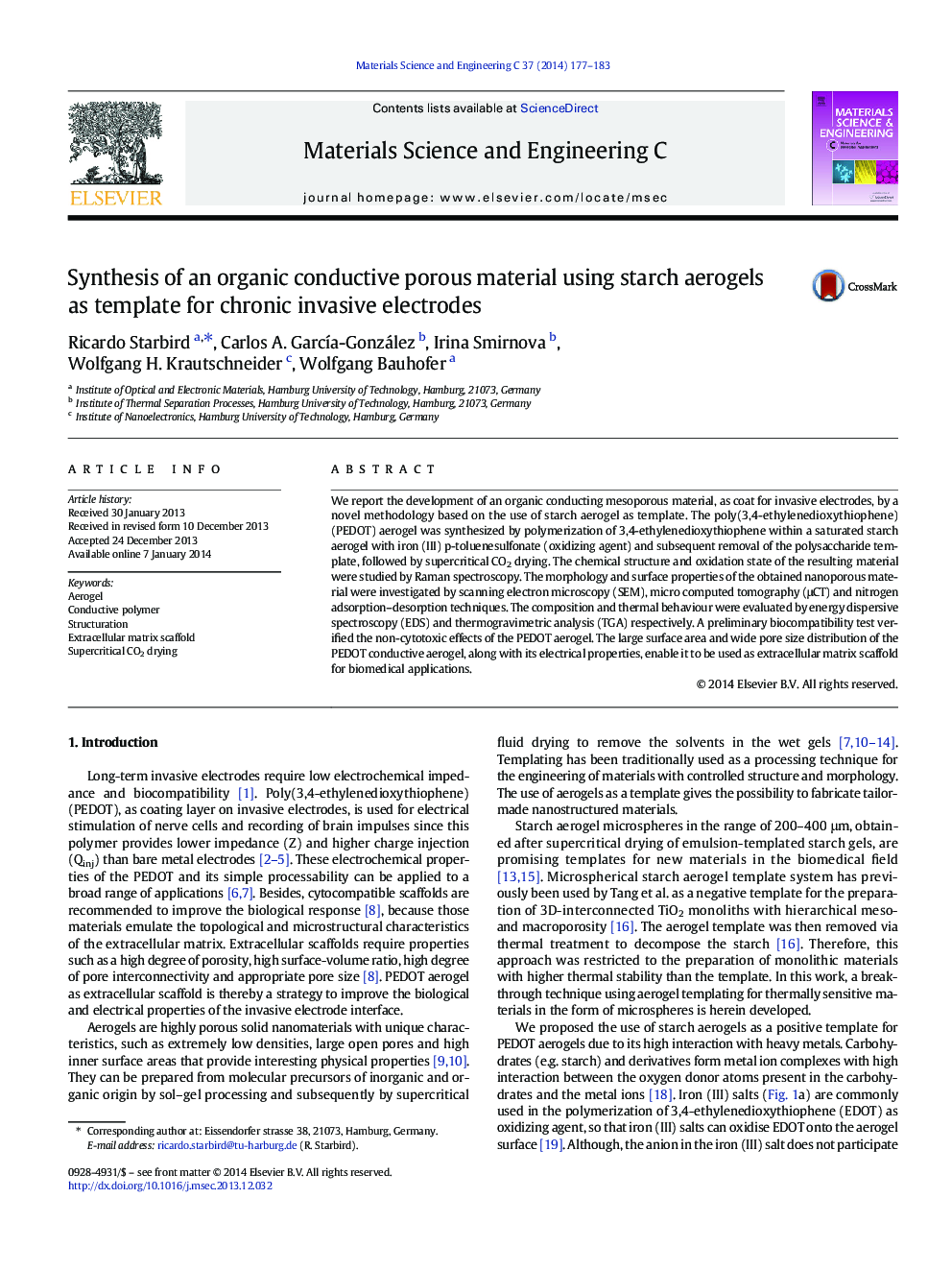| Article ID | Journal | Published Year | Pages | File Type |
|---|---|---|---|---|
| 1428998 | Materials Science and Engineering: C | 2014 | 7 Pages |
•Conductive porous material (PEDOT) was obtained using starch aerogel as template•The large mesoporous surface allows its use as extracellular matrix scaffold•The conductive organic aerogel is a suitable coat for chronic invasive electrodes•Gold electrodes coated with PEDOT aerogel showed a significant reduction of the impedance
We report the development of an organic conducting mesoporous material, as coat for invasive electrodes, by a novel methodology based on the use of starch aerogel as template. The poly(3,4-ethylenedioxythiophene) (PEDOT) aerogel was synthesized by polymerization of 3,4-ethylenedioxythiophene within a saturated starch aerogel with iron (III) p-toluenesulfonate (oxidizing agent) and subsequent removal of the polysaccharide template, followed by supercritical CO2 drying. The chemical structure and oxidation state of the resulting material were studied by Raman spectroscopy. The morphology and surface properties of the obtained nanoporous material were investigated by scanning electron microscopy (SEM), micro computed tomography (μCT) and nitrogen adsorption–desorption techniques. The composition and thermal behaviour were evaluated by energy dispersive spectroscopy (EDS) and thermogravimetric analysis (TGA) respectively. A preliminary biocompatibility test verified the non-cytotoxic effects of the PEDOT aerogel. The large surface area and wide pore size distribution of the PEDOT conductive aerogel, along with its electrical properties, enable it to be used as extracellular matrix scaffold for biomedical applications.
Graphical abstractFigure optionsDownload full-size imageDownload as PowerPoint slide
